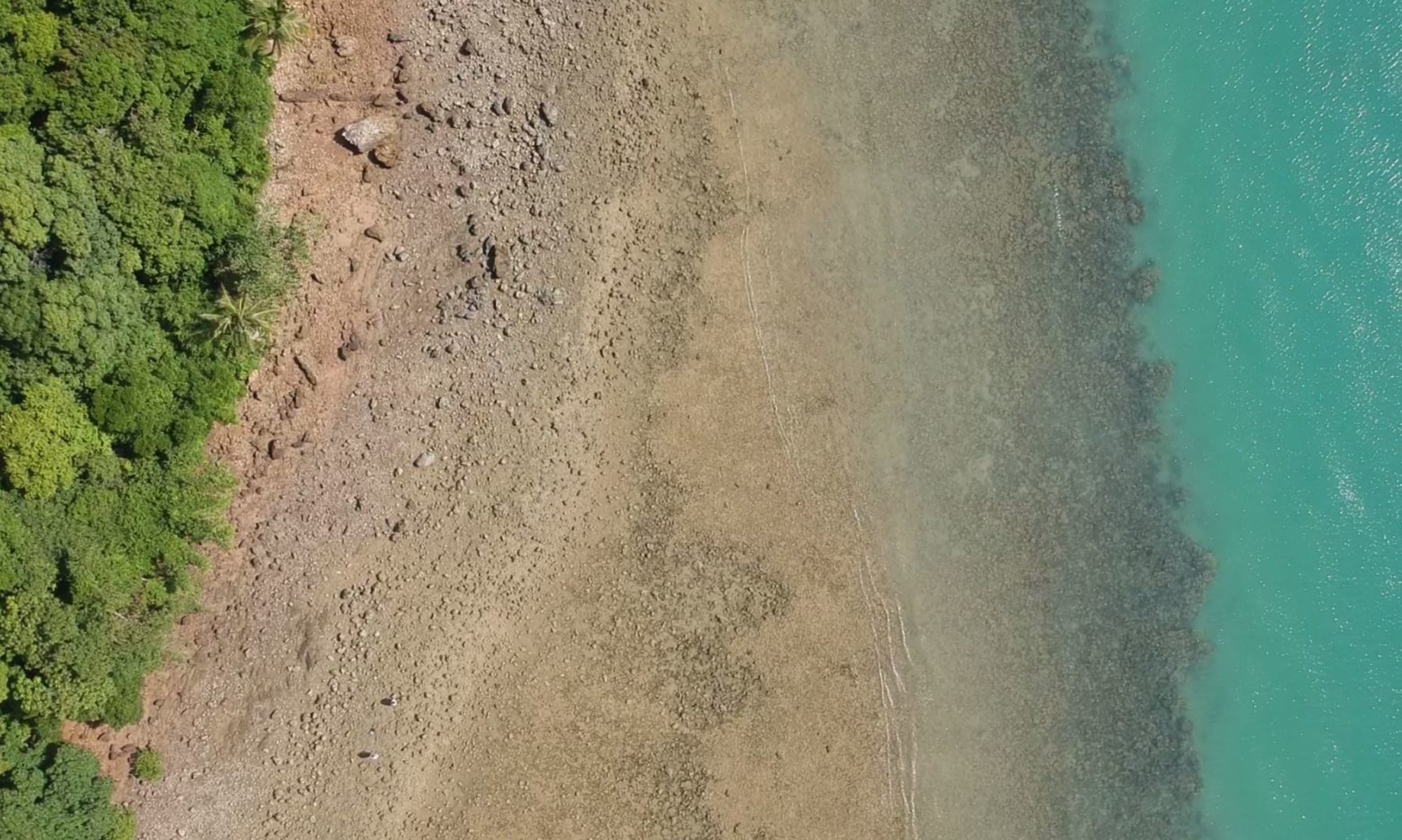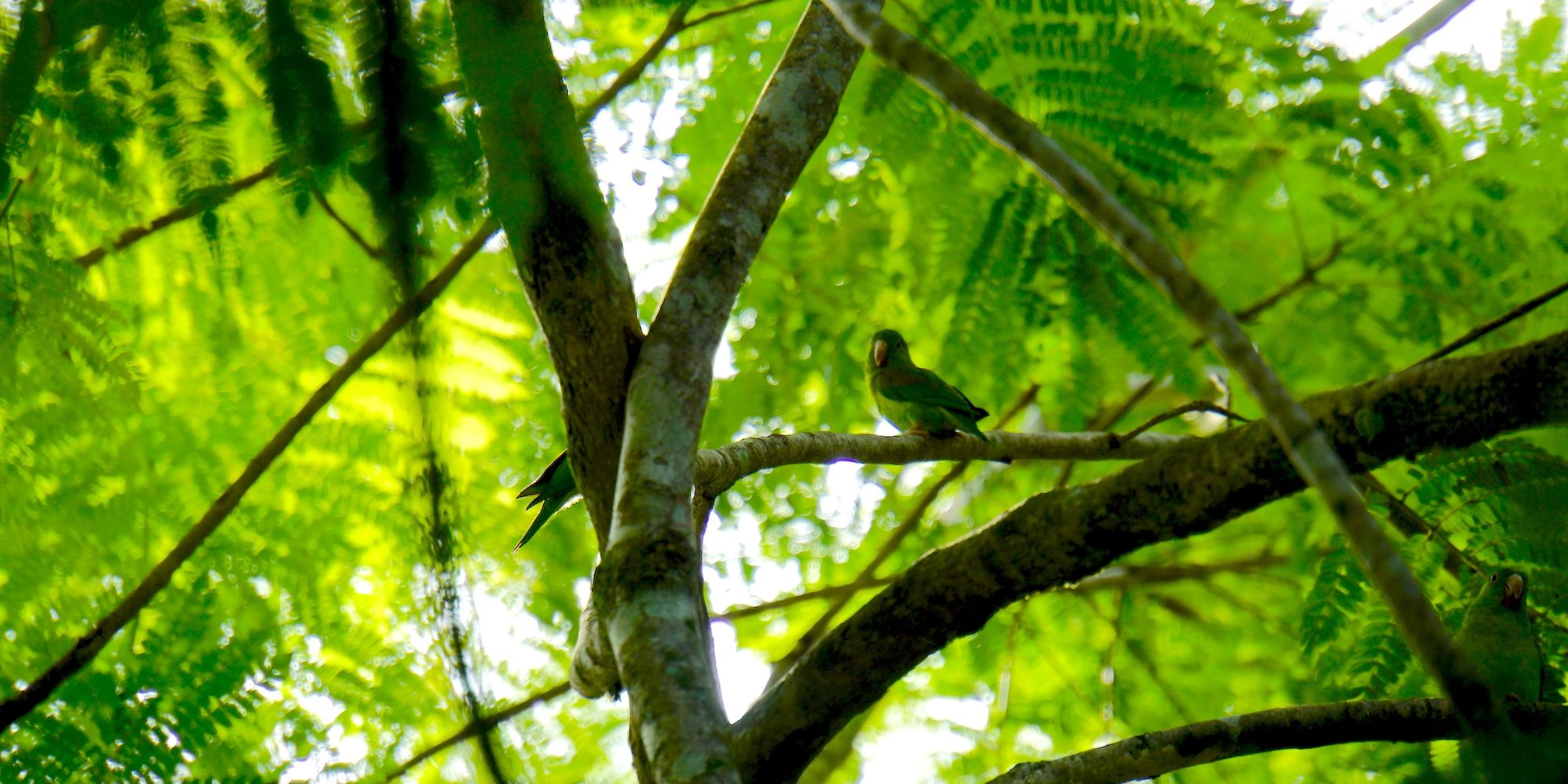Originally, the idea was to create a radiophonic journey through Gamboa—exploring the variety of birdsongs on Pipeline Road, lingering in the marshes of the Chagres and simply strolling around the neighborhood, capturing sound bites of both human and nonhuman residents.
The first time I ventured out alone to Pipeline Road, I brought along my bamboo flute. Back in the city, when I would play inside my room behind paper shoji screens, occasionally a brazen bird would perch outside on the balcony and vividly respond to my shrill notes with rhapsodic chirps.
In the jungle, however, it was a different story. The sheer immensity of the rainforest was humbling enough, but it was the symphonic richness of its soundscape that stopped me in my tracks: the competitive chatter of mealy parrots, the percussive taps of a woodpecker on a hollow tree trunk, rhythmically improvised clicks and chuckles counterpointed by cicada crescendi and glissandi, the four piercingly pure notes of an ant-thrush, clearly heard but never seen, always on cue with metronomic precision. Out there in the wild, the human arrogance of “music” produced by blowing through a lacquered reed of polished bamboo seemed extraneously redundant. So I just listened.

Out on the river, I silently witnessed many creatures both up close and through binoculars: a caiman lurking just under the water’s surface, a creme-colored caracara tearing at its prey, red-headed turkey vultures preening on high branches, white egrets, blue herons, striped jacobins and yellow-winged jacanas. Yet it was the acousmatic motif of a hidden howler monkey that set the tempo adagio from deep within the forest.

The title of the sound piece was inspired by the insistently repetitive cry of what I have since identified as a red-lored parrot on the Río Chagres. “Accurate! Accurate!” it seemed to squawk, as if challenging our inevitably flawed human assessment of its species and its surroundings. I’m projecting, of course, but it’s hard not to associate sounds with signals, phonemes with meaning, utterances with intention.
So I continued to move along the river in a kayak, paddling through the dense marshwater with a splashproof smartphone on my lap recording in low-tech mono, clumsily picking up the rumbles of wind and bumps on the microphone, as well as the buzz of a persistently pesky fly.

“¿Cómo te llamas?” rhetorically asks Jorge, Panamanian avifauna expert who already knows the appellations of every local bird he is seeing or hearing. Returning from my excursions, I search through a handful of field guides, my superficial gateway to the vast database of human scientific knowledge about the resident species of central Panama.
And so I moved on to the naming of birds and other creatures—in learned English, in local Spanish, in scientific nomenclature: variable seedeater / espiguero variable / Sporophila corvina * wattled jacana / jacana carunculada / Jacana jacana * white-necked jacobin / jacobin nuquiblanco / Florisuga mellivora * striated heron / garza listada / Egretta tricolor * mantled howler monkey / mono aullador / Alouatta palliata * yellow-headed caracara / caracara cabeciamarilla / Milvago chimachima * turkey vulture / gallinazo cabecirrojo / Cathartes aura * lineated woodpecker / carpintero lineado / Dryocopus lineatus * mealy parrot / loro harinosa / Amazona farinosa * northern tamandua / hormiguero norteño / Tamandua mexicana * coati / gato solo / Nasua narica * crowned tree frog / rana arbórea coronada / Anotheca spinosa * fer-de-lance / equis / Bothrops asper * black-faced ant-thrush / formicario carinegro / Formicarius analis…
This surtitled multilingual nomenclature, with male and female voices uttering very different words to describe essentially the same species, is more a reflection of human cultural perceptions than of the individual encountered in the wild. Juxtaposed with the natural soundscape of the creatures’ respective habitats, are these words disruptive, intrusive, invasive? Or merely indicative of our endless efforts to identify, capture, classify and label through relentless accumulation of data?

Inside a house in Gamboa, the melodic strings of a cello mingle freely with a giggling chorus of parrots in the tree outside. Agoutis roam neighborhood backyards, sloths and owls hang out in the branches above the sidewalk, puddles of túngara frogs turn up the volume after dusk… Humans seem to co-habit seamlessly with our nonhuman neighbors.
“Permanece escuchando” repeats Jorge, reminding us that there is always more to hear, signal after silence: Keep listening.
Cherise Fong


